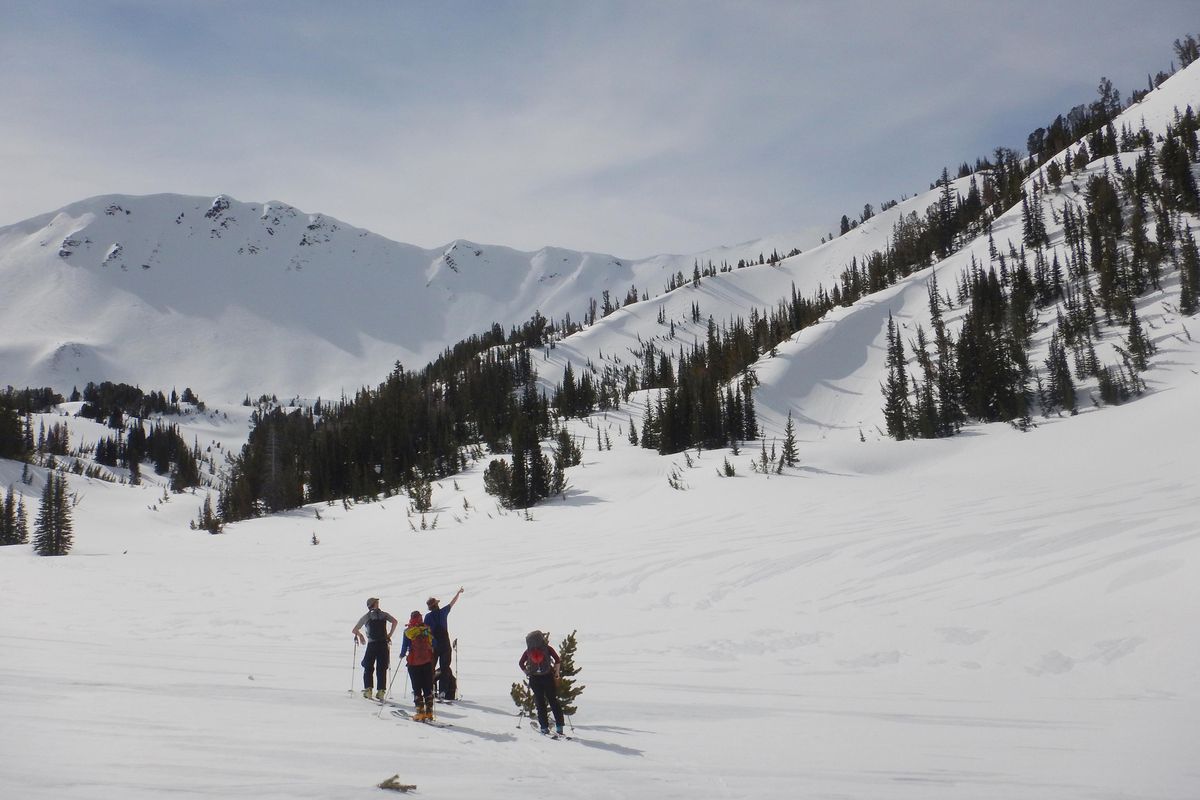Backcountry cabin offers skiers rustic comfort in Eagle Cap Wilderness

It’s not for everybody, but skiing into a backcountry cabin is an ideal break from the late-winter blues just when it’s needed most. Out there, weary refugees from the rat-race can shrug off life’s cares and ski some great lines. It’s a place where memories are made, friendships flourish, and visitors are enfolded in nature’s wide embrace.
With this in mind, some friends and I snuck away earlier this month (MARCH!) for a few days in the Wallowa Mountains of northeastern Oregon. Our destination was a cabin on a private swatch of land in the Aneroid Basin, deep inside the Eagle Cap Wilderness.
The trailhead is a few miles south of Joseph, Oregon, so it’s an easy three-hour drive from the Moscow/Pullman area. Once there, we spent a few minutes dressing for the long slog ahead, fine-tuning our packs, and sticking adhesive climbing skins to the bottom of our skis (see sidebar).
At that point, there was no immunity from the laws of physics. The cabin was more than 3,000 vertical feet above us, at the end of a six-mile trail that climbs up, up, up along the East Fork of the Wallowa River. Skins or no skins, skiing to the cabin – with full packs, no less – is a long, hard slog.
And the work didn’t end when arrived, either. With 10-12 feet of snow on the ground, winter still had the upper hand. Only the peak of the two-story cabin was visible; the outhouse was completely buried. Tired, sweaty, and wanting nothing more than to sit and scull a beer, we had to break out the shovels and dig down to liberate the doors and windows.
Once inside, we busied ourselves by splitting kindling, lighting woodstoves, and reclaiming the kitchen from months’ worth of accumulated dust and grunge. Though the old mining cabin has its charms, it’s a dark, drafty place where the wind whistles through gaps in the woodwork. The cooking facilities and general hygiene are straight out of the Middle Ages; in particular, the chore of melting snow to obtain water is a never-ending process.
But once the heavy lifting was over, there was time to prepare meals, swap stories, sip whiskey, and laugh. Though skiing is a central endeavor, staying at a snowbound backcountry hut is about much more than the skiing. Losing oneself in primitive conditions is at the heart of the matter.
Breakfast came and went quickly on Day 2 and we assembled outside, eager to tour the upper reaches of Aneroid Basin. Our packs were much lighter, but we still carried the essential tools for safe travel through avalanche terrain.
Led by Trevor Fulton, Outdoor Program director at the University of Idaho, we made our way east, working the contours and steadily gaining elevation as we prowled for good snow. Though it was my first time there, most of the others knew their way around and everyone paid close attention to the conditions: noting the angle of the terrain, which direction the slopes faced, and evaluating the stability of the snowpack.
Far away in the distance, the low rumble of wet-slab avalanches occasionally caught our attention. At that point, we’d scan the spectacular mountain panorama until someone spotted the slide. For a moment, all conversation stopped.
Avalanches are omens that cannot be ignored.
Done right, backcountry skiing is a never-ending detective story. For participants, the trick is not to become a victim.
The snow wasn’t perfect, but that’s often the case in the backcountry. Like Goldilocks’ porridge, it was too soft and wet down by the cabin, and too icy and wind-crusted up high. But we skied it, because it was there, and then we skinned back up to scope another line.
Somewhat unexpectedly, skiers occasionally broke into nice little glades and laid down a dozen or more flawless turns – stitch, stitch, stitch – as neatly as a sewing machine. Good snow is elusive, but it’s unmistakable once you find it.
That’s how we spent our days in Aneroid Basin.
Always climbing. Always looking for the next line.